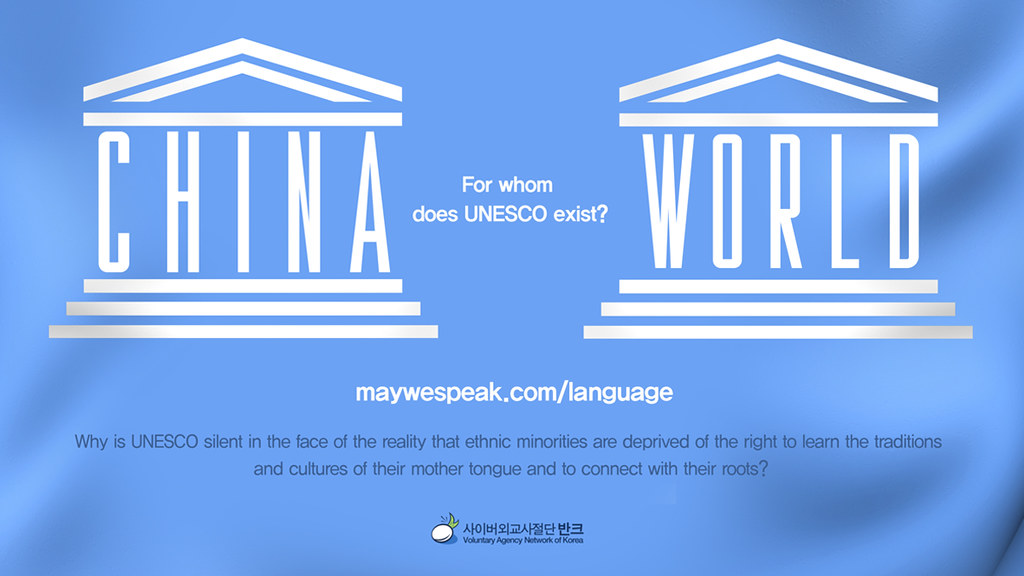VANK has created a digital poster asking the world to know whether the UNESCO is a national organization serving the interests of China or an international organization serving education and human rights.
The Chinese government has emphasized the centralized education of ethnic minorities in China, such as ethnic Koreans and Mongolians living in China to be assimilated into Chinese culture.
Because of this, ethnic minorities are deprived of the right to learn the traditions and cultures contained in their mother tongue and to be connected with their roots.
Beginning this September, ethnic Korean primary and secondary school teachers are required to teach Language and Politics from 2021 and to teach History from 2022 in pure Chinese.
However, UNESCO, which should criticize China’s policies, is condoning verbal annihilation of ethnic minorities in China which is against the purpose of the organization’s existence, only paying attention to the Chinese government, which pays the most contributions.
Conservation of cultural diversity is related to the purpose of UNESCO’s existence.
UNESCO’s purpose of contributing to peace and security is best guaranteed when respecting cultural diversity.
– UNESCO Universal Declaration on Cultural Diversity
UNESCO should not keep silent on this reality of ethnic minorities being deprived of the right to learn the traditions and cultures contained in their mother tongue and to be connected with their roots.
Accordingly, VANK created a digital poster and distributed it to the world that calls for the active action of UNESCO.
The poster begins with the phrase saying “For whom does UNESCO exist?”
The UNESCO logo is parodied to show CHINA, which symbolizes China instead of UNESCO on the left, and WORLD, which symbolizes the world on the right.
Through this, VANK seeks to urge UNESCO to protect humanity’s linguistic heritage and create a world where cultural diversity is respected.




